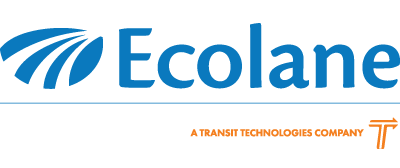Risk management and safety are always on the minds of those who work in transportation. Bus drivers, dispatchers, schedulers, maintenance personnel, managers, and agency boards all have a vested interest in the topic, not to mention the insurance companies providing coverage to transportation agencies. After all, what manager hasn’t heard a news story about a bus crash carrying several people and not instantly thought of a training opportunity?
The good news is that the safety and security of people riding in buses is, overall, quite high.
There are multiple methods which can be used to improve transit safety. Some are inexpensive or nearly free while others may be considered cost prohibitive until realizing that in a single, terrible instant, those options could quickly pay for themselves. What tools do you or your community already have available (or could reasonably purchase) which can help stakeholders increase the quality of their sleep each night?
- Well-maintained vehicles with proper safety features aimed at reducing damage or injuries to the driver and passengers
- Clear traffic patterns, roadways, walkways, bike paths or even horse paths
- On-Board vehicle cameras
- Quality training programs for transit agency staff
- Improved lighting at bus stop and other passenger stations
- Silent alarms on vehicles
- TRANSPORTATION SOFTWARE!
Let’s consider the ITS (Intelligent Transportation Software) option. When looking for a software solution, look for features that will give everyone some extra peace of mind.
Accurate, real-time GPS technology is a true differentiator! Can you tell, at any given time where your buses are? In a moment of crisis, whether it be a medical emergency or an accident, a vehicle driver might only be able to tell dispatch that there was an incident and due to circumstances, might not be able to go into details. I’ve personally been in situations like this before – a bus full of people and an injured or panic-stricken driver. In that situation, the software told the agency who was on the vehicle, where the vehicle was located, the disabilities of each passenger and who to call in the event of such an emergency. If only we had had on-board cameras! Our software, however, helped us make a terrible situation a little easier to deal with. The authorities who came to our aid (Police, Fire & EMT’s) were very appreciative of the fact that we knew very specific details about each person on the vehicle. It allowed them to deal with the emergency, not the paperwork.
Improve the reliability of bus schedules by monitoring driver performance. Not surprisingly, the old adage "if the cat is away the mice will play" plays a role in transit. For bus drivers, that is anytime you are not on the vehicle with them (99.9% of the time). While it has been my experience that the overwhelming majority of all drivers are incredibly awesome at what they do (driver, friend, consoler, safety instructor and yes, they even cross over to therapy!) a very tiny percentage should be closely monitored. Are they late with their pick-ups & drop-offs? Do they hang out at the park entirely too often? Are they taking lunch breaks that are twice as long as your other drivers? Be sure your software offers real-time GPS. You shouldn’t have to wait until the next day to see the path your driver is taking or how long they are sitting idle.
Communication with drivers without the use of a cell phone or two-way radio allows for real-time “private” conversations. Sometimes, having an important conversation over open radio waves can be detrimental to the situation you are dealing with and flat out rude. Additionally, doing so could be a violation of HIPAA laws. Be sure you keep private conversations private.
You should never have to wait to analyze the data for your day. Ensuring accurate, up-to-date report details as the day progresses should be the baseline for any modern transit software package. The ability to see upcoming events throughout the day but also those things that have already happened and are currently active can save an agency time & money.
Making an investment in your transit organization IS a wise choice. By making an investment in transit software, agencies are not only investing money but also time and effort. It is important that transit software development partners do the same. While the relationship may begin with a salesperson, it ultimately leads to a support team – the end result will allow you and your staff to focus on risk management.
Susan Starwalt has been a Regional Sales Director for Ecolane since 2015. For 17 years, Susan served as Director for Illinois-based CCCoA’s transportation program and she joined Ecolane with a variety of experience in transit management and operations. Susan currently resides in Indiana with her husband, two children and two Miniature Schnauzers.
About the Author
Susan Starwalt
Susan Starwalt has been a Regional Sales Director for Ecolane since 2015. For 17 years, Susan served as Director for Illinois-based CCCoA’s transportation program and she joined Ecolane with a variety of experience in transit management and operations. Susan currently resides in Indiana with her husband, two children and two Miniature Schnauzers.


